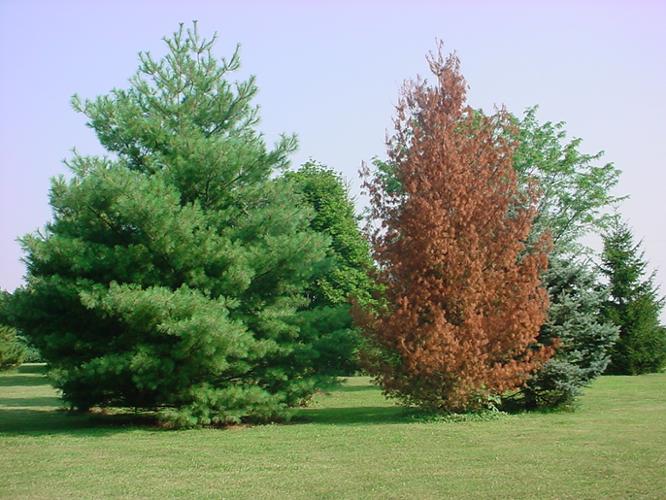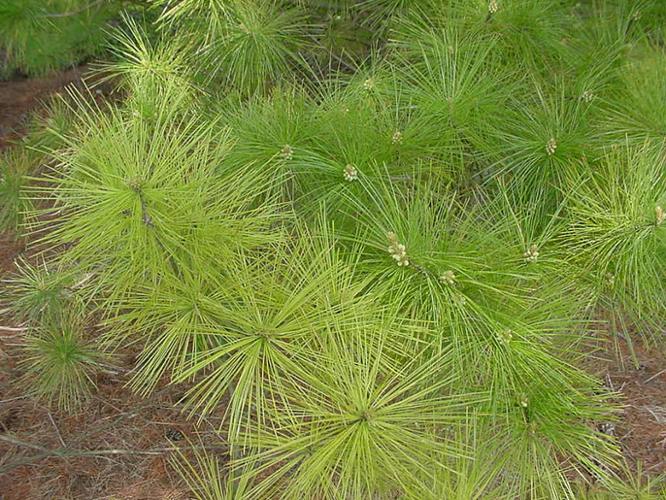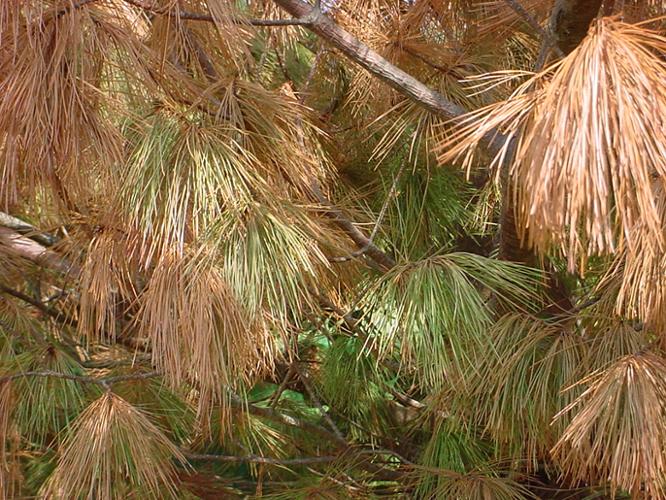Picture of the Week
August 31, 2020
White Pine Decline
Karen Rane and Tom Creswell, Plant Disease Diagnosticians
Decline is an all-too-common ailment of Eastern white pines (Pinus strobus)
in Indiana. Affected trees will first appear off-color (either pale green
or yellow-green when compared to healthy white pine trees), with shorter
needles and short annual twig growth. Later, the bark of the branches may
appear wrinkled, and the foliage becomes brown. Symptoms of decline
commonly develop after a tree has been in a site for 8 to 20 years.
The problem is related to root stress. White pines grow best in slightly
acidic, well-drained soils high in organic matter. The alkaline, heavy clay
soils found throughout much of Indiana are not favorable for optimum white
pine growth. Drought, excessive moisture and soil compaction are additional
stress factors that can contribute to decline. Declining pines attract
insect borers, which will damage the inner bark tissues, accelerating the
tree's demise.
Unfortunately, once the foliar symptoms develop, the roots of the tree have
already been damaged and there is little that can be done to reverse the
decline process. Dead trees should be removed, since these are attractive to
insect borers that may invade adjacent trees. The best management practice
to reduce decline in white pine is to plant this species in a site that is
optimum for its growth. For more information on this problem, check out
Click image to enlarge




